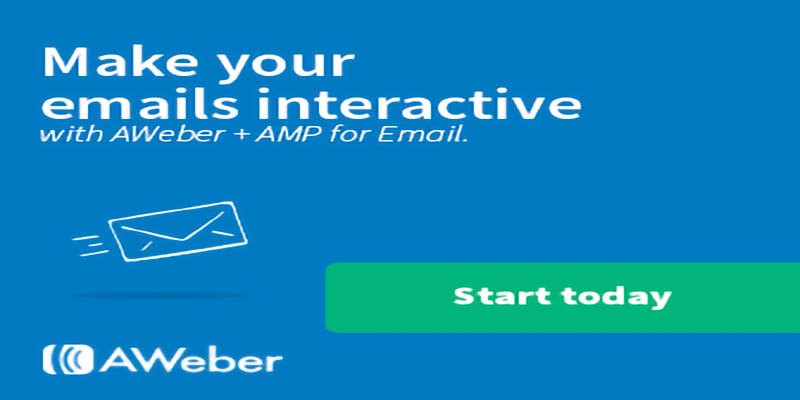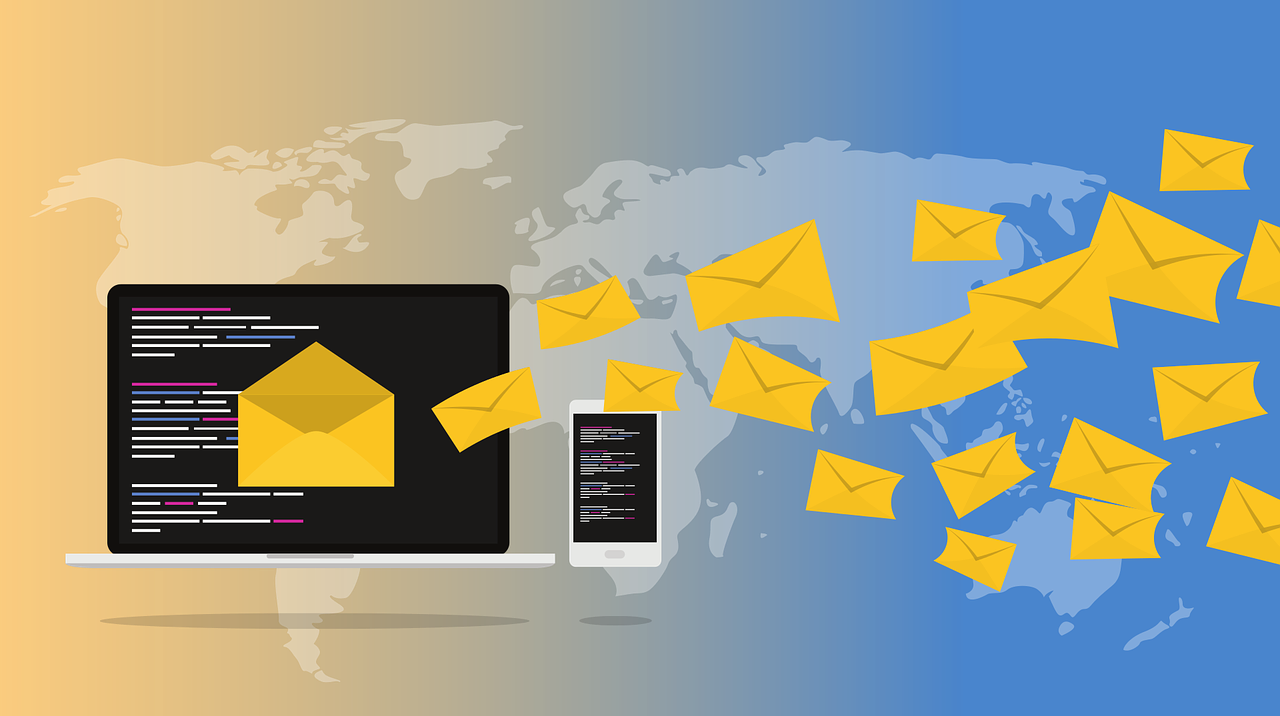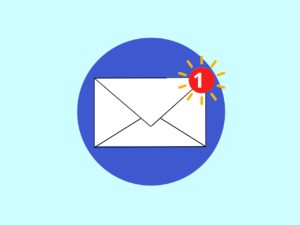An autoresponder is a software tool that automatically sends pre-written emails to individuals or groups of people, such as a mailing list or a group of website visitors, in response to specific actions or triggers, at set intervals.
Businesses often use autoresponders to send emails such as newsletters, promotional materials, or automated customer service messages. Autoresponders are used in various contexts, from online marketing and customer service to human resources and event planning. This article will explore how autoresponders work, how they can be used, and some of the benefits and drawbacks of using this software.
An autoresponder collects email addresses from individuals who opt-in to receive communications from a business. This can be done by having a sign-up form on a website, collecting email addresses at an event, or other means. Once an email address is collected, it is added to the autoresponder’s database. This database is then used to send out automated messages at predetermined intervals.
Email Marketing
In email marketing, an autoresponder automatically sends a predefined series of messages to subscribers after they opt-in to receive email communications. One of the most common uses of autoresponders is for sending out newsletters. A business can use an autoresponder to send out a regular newsletter to subscribers, keeping them informed about the latest company news, promotions, and other information.
These email messages are pre-written and scheduled to be sent at specific intervals, allowing businesses to nurture leads effectively and build relationships with their audience. For example, when someone signs up for a newsletter or a free trial, they may automatically receive an initial confirmation email and a welcome message to new subscribers, thanking them for signing up and providing them with additional information about the company. A series of educational or promotional emails over several days or weeks may follow this.
Customer Service
Another use of autoresponders is for automated customer service., such as sending purchase confirmations, shipping notifications, and password reset instructions. A specific action, such as a purchase or a password reset request, typically triggers these messages.
Many businesses use autoresponders to provide instant and automated responses to customer inquiries, such as FAQs or troubleshooting instructions. This allows businesses to respond to customer needs quickly and can help to reduce the workload of customer service teams.
For example, a business can use an autoresponder to send automated messages to customers who have made a purchase, providing them with tracking information and details about their order.
Autoresponders can also send automated messages to customers who have abandoned their shopping carts, reminding them of the items they left behind and offering them a special offer to encourage them to complete their purchases.
Online businesses use autoresponders to engage with customers by providing them with relevant and timely information. Autoresponders are an effective way for businesses to stay in touch with their audience, even when they can’t respond to individual messages in real time. They can help to increase brand awareness and customer loyalty by providing a consistent and personalized experience.
Promotional Services
Autoresponders can also be used for promotional purposes. A business can use an autoresponder to send automated messages to subscribers, offering them special deals or discounts, promoting a new product or service, or highlighting upcoming events. This can be a very effective way to keep subscribers engaged and encourage them to purchase.
There are many benefits to using autoresponders. For one, they save time. Instead of manually sending out emails to each subscriber, an autoresponder can do it automatically, allowing business owners to focus on other tasks. Autoresponders are also very cost-effective, as they don’t require a lot of resources to set up or maintain. Additionally, they can help to improve customer engagement by regularly providing subscribers with relevant information and offers.
Human Resources
Autoresponders can also be used in human resources, for example, to send automated responses to job applicants acknowledging receipt of their resumes and providing them with the next steps. This can help reduce the workload of HR teams, who can focus on more critical tasks such as interviewing and hiring.
Finally, autoresponders are also commonly used in event planning to confirm registration, provide updates and reminders, and gather feedback from attendees.
Drawbacks & Downsides
While autoresponders can be a valuable tool for many businesses, there are some potential downsides to consider. One common issue is that autoresponders can come across as impersonal or robotic, which can negatively impact the customer experience. To avoid this, businesses should ensure that their autoresponders are well-written, personalized, and relevant to the recipient.
Additionally, it’s essential to be mindful of the frequency and timing of autoresponders to avoid overwhelming recipients with too many messages or sending them at inconvenient times. If not configured correctly, autoresponders can lead to inbox clutter for the recipient and eventually unsubscribing. Also, some jurisdictions like European Union have specific laws about sending automated commercial emails, and businesses must comply.
Popular Autoresponder Services
There are a number of different autoresponder services available, each with its own set of features and pricing plans. To help you choose the best one for your business, we’ve compiled a list of the top autoresponder services on the market.
- AWeber: AWeber is a popular autoresponder service that is particularly well-suited to small businesses. It offers a variety of features, including a drag-and-drop email builder, pre-built email templates, and a wide range of integrations with other tools and platforms. AWeber also offers a free trial and a 30-day money-back guarantee for its paid plans. Recently Aweber has also added a free level. Although it is limited, it offers enough tools to get started.
- GetResponse: GetResponse is an all-in-one marketing platform that includes autoresponder functionality. In addition to its email marketing tools, it offers features such as webinars, landing pages, and various integrations with other platforms. GetResponse offers a free trial and a wide range of pricing plans to fit the needs of businesses of all sizes. GetResponse has recently added a free-for-life membership level. Although limited in features, it has enough tools to get started.
- ActiveCampaign: ActiveCampaign is an all-in-one marketing platform that includes autoresponder functionality. In addition to its email marketing tools, it offers features such as a CRM system, sales automation, and various integrations with other platforms. ActiveCampaign offers a free trial and a wide range of pricing plans to fit your needs. ActiveCampaign carries a higher price than most but offers an impressive array of powerful tools. If you can afford ActiveCampaign, I suggest you take it for a test drive. I’m sure you will be so impressed you will be a devout lifetime member.
- Mailchimp: Mailchimp is one of the most popular autoresponder services available. It offers many features, including a drag-and-drop email builder, pre-built email templates, and various other tools and platform integrations. Mailchimp also has a free plan that allows users to send up to 12,000 emails per month to up to 2,000 subscribers, making it a great option for new businesses.
- Constant Contact: Constant Contact is another well-known autoresponder service popular among small businesses. It offers many features, including a drag-and-drop email builder, pre-built email templates, and various other tools and platform integrations. Constant Contact also has a free trial allowing users to try the service before committing to a paid plan.
- ConvertKit: ConvertKit is a popular autoresponder service for bloggers and content creators. It offers a variety of features, including a drag-and-drop email builder, pre-built email templates, and a wide range of integrations with other tools and platforms. ConvertKit offers a free trial and a 30-day money-back guarantee for its paid plans.
- Drip: Drip is a powerful autoresponder service that is particularly well-suited to e-commerce businesses. It offers many features, including a drag-and-drop email builder, pre-built email templates, and various integrations with other platforms. Drip offers a free trial and a 14-day money-back guarantee for its paid plans.
Conclusion
In conclusion, an autoresponder is a powerful tool that allows businesses to save time and resources while automating their communications with a specific group of people in response to certain actions or triggers. Autoresponders can be used for many purposes, including email marketing, customer service, human resources, and event planning. When used effectively, autoresponders can help to improve the customer experience, reduce workload, and increase brand awareness and customer loyalty. However, it’s important to be mindful of autoresponders’ potential downsides and use them in a personalized, relevant, and timely way while complying with applicable laws and regulations.
To see a simple autoresponder in action, sign up for the free report:
Well, at least if you don’t read this report!
There are many good autoresponders out there, but my favorite is Aweber. It’s easy to use and has automation built into its basic plan. It costs just a little more than Getrespone, but the price is worth it for the automation.


